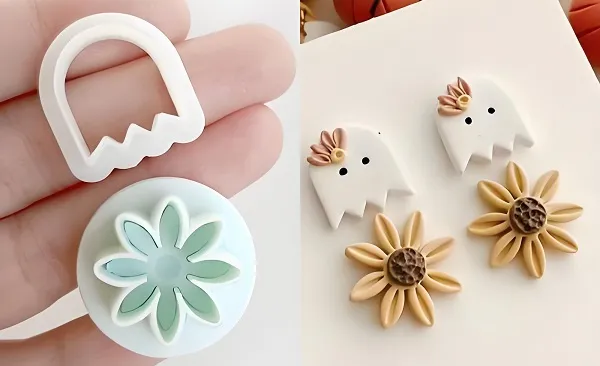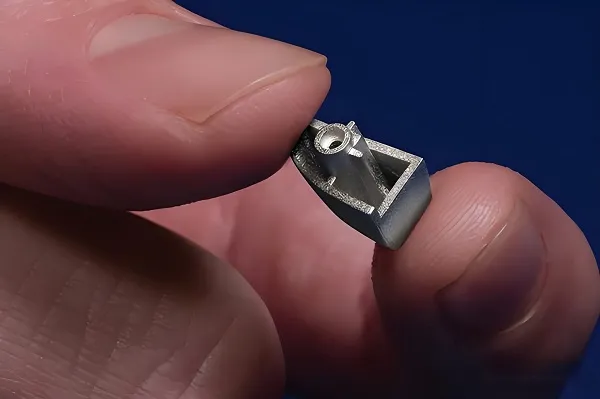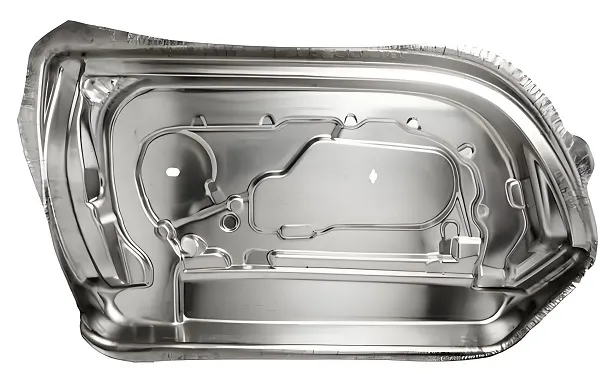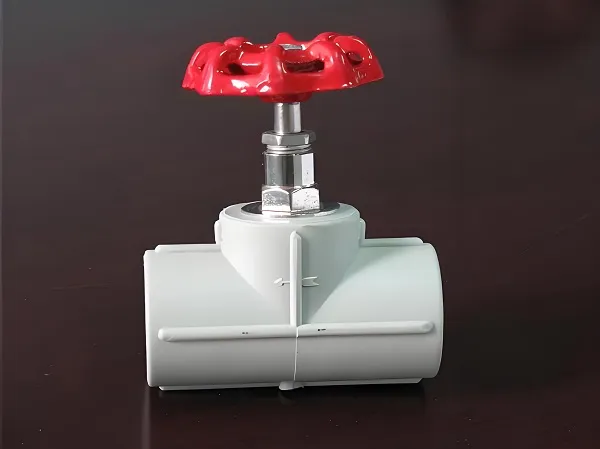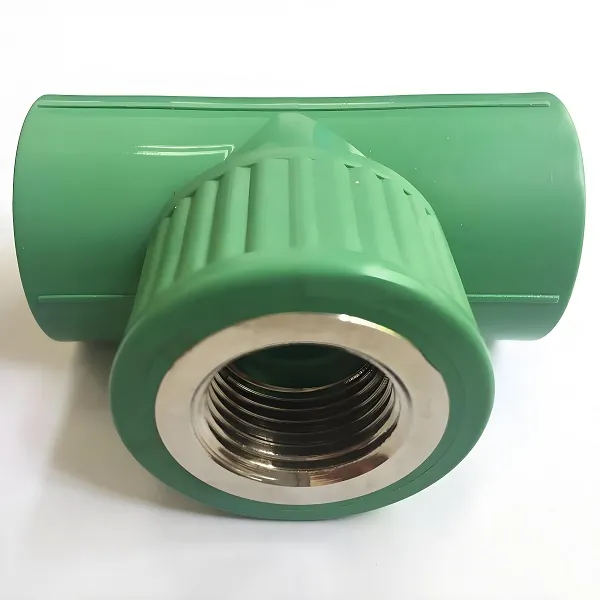As a technical professional deeply involved in the manufacturing industry, CNC machining (Computer Numerical Control Machining) has always been one of the core technologies for achieving precision manufacturing. Its ability to use computer – programmed automated tools to transform metal or plastic blanks into high – precision parts not only reshapes the traditional processing flow but also demonstrates irreplaceable advantages in aspects such as complex geometric shaping and batch – production consistency. This article, in combination with Goldcattle’s professional service system, analyzes from the perspectives of technical principles, process details, and industry practices, providing a systematic reference for practitioners.
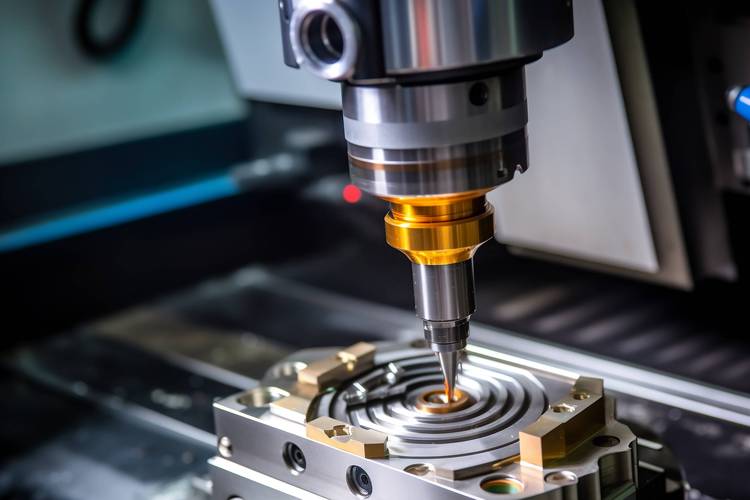
I. Core Processes: Technological Breakthroughs in Multi – axis Machining and Material Adaptability
The core of CNC machining lies in the subtractive manufacturing logic – precisely transforming a 3D model into a physical part by removing materials along a preset trajectory with a tool. Goldcattle’s service network covers three basic processes:
Milling
3 – axis Milling: Predominantly featuring X, Y, and Z linear movements, it is suitable for processing basic structures like planes and grooves. The standard tolerance can reach ±0.005″ for metals and ±0.010″ for plastics. It is the most cost – effective general – purpose process.
4/5 – axis Milling: With the addition of rotational axes (such as A/C axes), the tool can penetrate the workpiece from multiple angles, significantly reducing the number of clamping operations. It is particularly suitable for complex curved – surface parts like aerospace blades and medical joints. Goldcattle supports a maximum milling size of 80″×48″×24″, meeting the needs of large – scale structural components.
Turning
Through the cooperation of workpiece rotation and linear tool movement, external and internal hole processing of shaft – type parts is achieved. Goldcattle’s double – spindle lathe can handle workpieces with a maximum length of 62″ and a diameter of 32″. It supports thread processing (including customized threads) and radial milling functions, taking into account both cylindrical features and complex end – face structures.
Routing
This is a planar cutting process for plastics and composite materials, often used for the rapid prototyping of non – metallic parts such as circuit board substrates (e.g., FR4) and acrylic panels. The minimum feature size can reach 0.020″ (0.5mm).
II. Materials and Precision: Dual Guarantees for Industrial – grade Manufacturing
(I) Technical Logic of Material Selection
The material adaptability of CNC machining reflects its process flexibility:
Metal Materials:
Aluminum Alloys (6061/7075): The first choice for lightweighting, widely used in automotive structural parts (such as suspension components) and electronic product casings, combining strength and cutting efficiency.
Stainless Steels (316L/17 – 4PH): Core materials for medical implants and aerospace fasteners. Passivation treatment can further enhance corrosion resistance (meeting ASTM A967 standards).
Titanium Alloys (Grade 5): With a high strength – to – weight ratio, they become key materials for aerospace engine compressor blades and orthopedic implants. Carbide tools and cooling strategies are required to avoid tool sticking.
Engineering Plastics:
PEEK: Resistant to high temperatures (260°C) and chemical corrosion, it replaces metals in semiconductor equipment components and aerospace lightweight parts. The GF30 – filled grade can improve wear resistance.
ULTEM: Flame – retardant, with high dielectric strength, meeting medical sterilization standards, and often used in surgical instrument handles and aerospace electronic casings.
(II) Technical Details of Precision Control
Standard Tolerance System: Following ISO 2768, the default tolerance for metal parts is ±0.005″, and for plastics it is ±0.010″. Precision machining can achieve a tolerance within ±0.001″ (such as for aerospace fasteners), and clear requirements need to be specified through GD&T.
Size Limits: The maximum processing size can reach 2032×1219×610mm (milling), and the minimum feature is 0.5mm, covering the full range from miniature gears (such as watch components) to large – scale tooling fixtures.
Inspection System: First Article Inspection (FAI) is standard. It supports CMM coordinate measurement, material certification (such as AMS 2759), and traceability reports, meeting the AS9100D aerospace quality management requirements.
III. Surface Treatment: Synergistic Optimization of Function and Aesthetics
Surface treatment is a crucial upgrading step for CNC parts from “blank” to “finished product”. Goldcattle offers over 30 process options, which can be divided into three categories:
Protective Treatments
Anodizing: Type II (decorative, colored coating) and Type III (hard anodizing, wear – resistant layer thickness of 25 – 100μm), suitable for aluminum alloy heat sinks and sports equipment parts.
Electroless Nickel Plating: Uniformly covers irregular surfaces, enhancing the salt – fog corrosion resistance of stainless – steel parts (such as marine equipment components), with a coating thickness of ≥0.0001″.
Functional Treatments
PTFE – impregnated Hard Anodizing: Embeds polytetrafluoroethylene in the anodized layer to form a self – lubricating surface, used for high – load sliding components (such as UAV joint bearings), reducing the friction coefficient to below 0.05.
Electropolishing: Levels the metal surface through electrochemical dissolution, reducing the Ra value from 125μin to 32μin, suitable for optimizing the inner – wall finish of medical endoscope tubes.
Decorative Treatments
Powder Coating: Provides matte or high – gloss textures, with colors matching the RAL color card, used for visual optimization and wear protection of consumer – electronics casings.
Laser Marking: Achieves permanent marking of part serial numbers and QR codes, meeting the traceability requirements of the automotive supply chain (such as the IATF 16949 standard).
IV. Design Optimization: Comprehensive Considerations from Manufacturability to Cost Control
Efficient CNC processing starts with a reasonable design. The following are key technical points that practitioners need to focus on:
Geometric Feature Design
Inner – corner Radius: It is recommended to be ≥0.020″, matching the standard tool radius (such as a 1/8″ end – mill), to avoid using special tools and increase costs.
Bottom – corner Radius: Smaller than the inner – corner radius, ensuring that the same tool can clean the bottom of the groove, reducing the number of tool changes.
Undercut Structures: Try to avoid closed undercuts. If necessary, 5 – axis machining or component splitting can be used to reduce the complexity of tooling.
Material Removal Efficiency
Reduce deep – cavity structures (depth – to – diameter ratio > 6:1) to avoid accuracy loss due to long – tool vibration; prefer symmetric structures to balance the cutting force distribution.
For batch production, use the “multi – part – from – one – material” layout (such as processing multiple shaft – type parts from one aluminum rod) to reduce blank waste.
Tolerance Allocation
Use loose tolerances (such as ±0.010″) for non – mating surfaces, and mark strict tolerances for key mating features (such as bearing holes). Tolerance optimization can reduce processing costs by more than 30%.
V. Industry Challenges and Technological Trends
Despite the significant advantages of CNC machining, the following challenges need to be faced:
Complex Structure Limitations: Interlocking and honeycombed hollow structures are difficult to achieve through traditional milling. It is necessary to combine EDM wire – cutting (suitable for conductive materials) or a 3D printing + machining hybrid process.
Scale – effect Limitations: The unit cost decreases slowly as the batch size increases. When the output > 10,000 pieces, injection molding is more economical. It is recommended to use CNC to make molds and then switch to injection molding production.
Technological Upgrade Directions: The increasing popularity of 5 – axis machine tools (Goldcattle supports a maximum stroke of 26″), AI – driven tool – path optimization (reducing idle – cutting time by more than 30%), and the replacement of traditional oil – based media with environmentally friendly cutting fluids are becoming key directions for industry – wide technological breakthroughs.
VI. Conclusion: Driving the Upgrade of the Manufacturing Industry through Technology Integration
From the servo – mechanism prototype in the MIT laboratory to the intelligent processing network covering the globe today, the evolutionary history of CNC machining has always been deeply intertwined with the needs of the manufacturing industry. As professional practitioners, we need to establish a systematic understanding in the intersection of material properties, process parameters, and design specifications. At the same time, make good use of the global supply – chain resources (over 10,000 certified suppliers) and digital tools (instant quotation engines, manufacturability analysis) of platforms like Goldcattle to transform from “part processing” to “solution – providing”. In the future, with the penetration of Industry 4.0 technologies, CNC machining will be more deeply integrated into automated production lines, becoming an intelligent hub connecting additive manufacturing and robot assembly, continuously pushing the boundaries of precision manufacturing.

